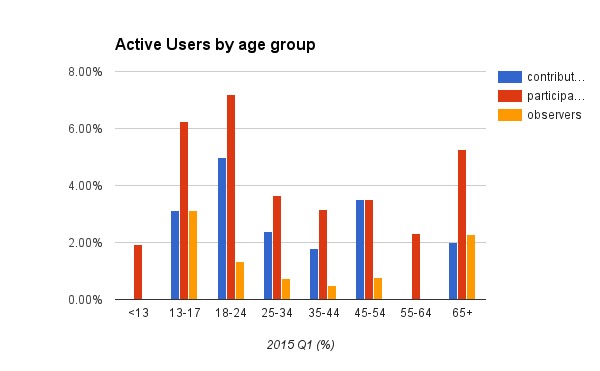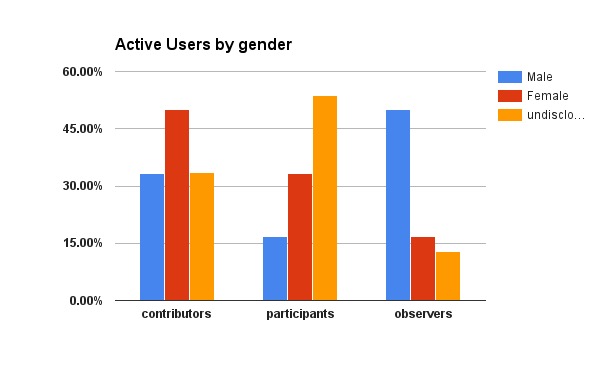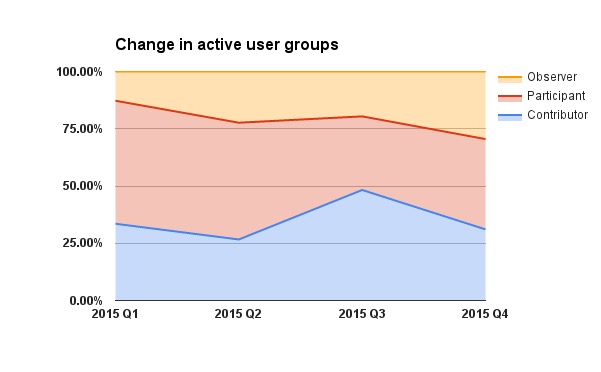This article was originaly published on Medium back in 2015. I am posting it here as well since the content still holds true after more than 2 years.
I follow the startup scene in Lisbon from a safe distance. It’s good to be close enough to understand what is going on, and it’s important not to focus too much and lose perspective. The same applies to a number of startups abroad.
For quite some time, I have felt we are building a broken ecosystem, akin to the dotcom era.
- We are praising rock stars instead of sound managers and business people;
- We pass on mantras like they were gospel, ‘fail fast’, ‘release often’;
- For investors, the measure of a startup is its latest funding round;
- Teams work hard to participate in competitions that will get them face time with investors;
- Cities across the world compete over who has the best place to setup a startup business: boasting about cheap rents, talented human resources and good infrastructures;
- Companies have been formed with the sole purpose of ‘accelerating’ startups. They provide them with mentorship by professionals. Some of these mentors have never tried, much less failed to start a profitable business;
This list could go on and you have surely found a great deal of rants and nay-sayers. The scenario is so psychedelic that we have began calling some startups ‘unicorns’, because their perceived value is over 1 Bilion.
Which isn’t to say that there aren’t worthwhile companies bringing in true innovation to the world. They are just outside the spotlight, most of the times at least. The startup-circus sells more newspapers, gets more page views and is much more entertaining to watch.
There are also some sound professionals that give their best possible advice and guidance. Sometimes this requires the modesty to admit mistakes, failures and fears. Again, we have to cut through the noise of the startup-circus so we can listen.
The web is filled with a discourse that can be divided in 2 categories. It’s either inspirational or pragmatic.
Inspirational is everything you find on how to build a corporate culture, how to manage people, how to stay motivated in adversity. CEO’s and their communication teams have been quite prolific in producing this sort of content.
Pragmatic content are tutorials, case studies and guides on how to design, apply growth tactics or write the best possible subject line for your next newsletter. Some of these guides can be pretty good, others are nothing more than click bait. You will come across articles for every step of this spectrum and some you will enjoy reading (after providing the webmaster with your email address in that annoying pop-up).
The problem I see in pragmatic content is that it focuses in the end result, applying any means necessary. It is therefore no wonder that we have seen a rise in ‘growth hackers’ instead of performance engineers or marketing managers.
Ironically, most pragmatic content lacks the ethics and values present in the inspirational category, which in turn is often guilty of over simplifying and lacking pragmatism.
Matters become worse when countless hours of reading from both categories lead us to conclude none of it can be applied to the problem we have. Books are a good exception to this rule, they can be inspirational, pragmatic and their knowledge applied to a large number of similar problems.
This is the point where I could claim that sharing knowledge that is both inspirational and pragmatic could save the startup business everywhere and fix the broken ecosystem. I won’t, because it won’t work. At this point, focusing in improving content being shared requires a lot of effort and risks drowning in the deluge of noise and babble.
We need a shift in how we think and build strategies. Part of the shift means measuring startups by what they are worth and not by their perceived (future) value.
Building a Model for Active Users

My proposal for this measurement is user growth and participation. A large part of what follows is taken from Eric Ries’ book ‘The Lean Startup’. On page 123 the book shows a chart outlining the percentage of users that navigate from the sign-up to the subscription process. It’s more than just a conversion funnel.
The chart felt like a good indicator of the health of the startup and a radar to pin point where the UX challenges were. The problem was that the chart was specific to a company.
As a solution, I built a scale of participation for the different types of users:
- Not registered (visits but never signed up or does not login)
- Lurker (signed up but does not perform any action on the site)
- Observer
- Participant
- Contributor
This scale was built after reading a paper titled ‘A Social Interaction Taxonomy: Classifying User Interaction Tasks in Web Applications’ written by Monika Steinberg, Nicole Ullmann, Jürgen Brehm. In it, the authors classify every action the user can perform in a website. For this use case we listed our interactions and ranked them from lowest to highest effort. In the cases where this method was tested, high effort tasks also involved added value for the startup. (For mobile and desktop applications, the chart on the paper may require updating.)
With this framework in place we are able to collect data on what actions are being performed and ascertain the level of participation (engagement) of the users with the site. This sort of monthly or quarterly report can later be used by marketing and UX, investors and management.
Example charts of the Active Users dashboard



Making use of the charts
- Cross referencing this information with geographical demographic data helps marketing plan in a more strategic way.
- UX and graphic designers can focus their attention in specific actions or steps of the user journey.
- Management and Investors can use the data to make decisions and adjust their strategy.
Given the required transparency, the startup ecosystem would know for a fact the health of each company inside it.
This raises questions regarding the value of a User and if that value should change over time or not. There is also the question if we are dealing with unique users, such as what is supposed to happen with Facebook, or duplicate users, like what happens on Reddit. Let’s agree that this use of User Participation as a metric for startups as a whole is close to a Utopia.
Yet, startups seeking funding should rely heavily on user participation and share that information with their investors, if for no other reason to show their money is being put to good use.
This metric is also a valuable tool for those managing collaboration and knowledge management within a company. In a granular level, you will be able to pinpoint the most active users and the ones less engaged with the tools you are using.
Startups will die

Not all, but most of the startups will die if their managers and investors switch to metrics that focus on user participation and behaviour. There will be no pivot tactic or funding round to save them. That is a good thing, believe me.
The startup circus is crowding the ecosystem and keeping the truly valuable companies from thriving.
You can argue that this sudden demise will mean less choice for the user. It will no doubt mean less choice, and it will also mean less crappy options to choose from. Users will also be forced to demand more out of the good and services they are purchasing online. From this, the startup may see the need for a premium / paid service instead of dragging around a freemium service plan that in the end may result in its demise.
Dynamic Systems have a way of stabilizing themselves. The startup ecosystem is not different.
The real zombie apocalypse is already here
Some startups are dead already. They are feeding on vanity metrics, page views and distracted investors.
The only way to stop these Zombies is from within the management or through the investors. This is where the hard work comes in.
For management this means having the courage to embrace User Participation and a true Active User system to measure the health of the company. It also means to pass along this way of working to other startups.
For Investors it means enforcing a culture of transparency and knowing how to deal with facts when they don’t go our way. Doing this with empathy is a rare skill.
This attitude is hard and harsh, but please refrain from telling me it’s not possible. There are examples of startups that have put these ideas to practice. Such as Buffer.
Accelerators, incubators, and the like will have to take this one step further and present hard numbers on how many startups they have helped grow and how. It’s easy to boast about how many startups you have had in your programmes; how many you supported and how many saw investment. Instead of taking a cut and moving on, these companies need to follow up and see which ones succeeded.
The idea that 90% of the startups fail and that that is to be expected, is rotten to it’s core. It’s a shield used as an excuse for poor performance.
It is imperative to focus more on the ones worth saving. The only way to know which ones will survive is to bring back a focus on the user and hard business metrics.
Images for this article were kindly provided by Mário Pires, of Alves&Pires. Give them a call if you are looking for a good content creation team in Lisbon.
By Bruno Amaral on November 1, 2015.
Exported from Medium on April 23, 2018

